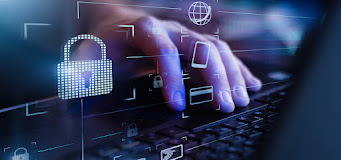Whistleblowers are often government employees or contractors who reveal classified information about misconduct, corruption, or illegal activities within their organizations. Their actions can spark global debates because they highlight tensions between transparency and national security. Whether celebrated as protectors of democracy or criticized for compromising security, whistleblowers play a complex and controversial role in society.
One of the earliest and most famous whistleblowers was Mark Felt, also known as "Deep Throat" in the Watergate Scandal. Felt provided critical information that exposed corruption within the Nixon administration, ultimately leading to Nixon’s resignation. His actions show the power of whistleblowers to hold those in power accountable, highlighting the importance of their role in protecting democracy.Another pivotal figure was Daniel Ellsberg, who leaked the Pentagon Papers during the Vietnam War. These documents revealed that the U.S. government had misled the public about the war's progress and objectives. I and many others believe Ellsberg’s revelations were a brave act of conscience, earning him recognition as a pioneer among whistleblowers. Unlike Felt, who worked in the shadows, Ellsberg faced public scrutiny and legal consequences but ultimately contributed to changing public perceptions of governmental transparency.
In the digital age, whistleblowing has taken on new dimensions. One of the most debated figures is Edward Snowden, who leaked classified documents exposing mass surveillance programs conducted by the NSA and the Five Eyes Alliance. I think Snowden’s revelations sparked necessary debates about privacy, security, and the ethical limits of government surveillance. Unlike some whistleblowers, Snowden carefully evaluated the documents he leaked to minimize harm, focusing on transparency over chaos. However, his actions forced him into exile, and he now resides in Russia under asylum.
A more recent case involves Jack Teixeira, who leaked classified information about the Russia-Ukraine war on a Discord chat. Unlike Snowden, Teixeira’s motivation was not rooted in ethics but rather in impressing his friends. Despite his intentions, the consequences of his actions were severe, raising concerns about how sensitive information is handled and accessed by government employees.
The actions of whistleblowers raise fundamental questions: Do they protect democracy by exposing wrongdoing or do they endanger national security? Figures like Ellsberg and Felt are often celebrated for their courage, while individuals like Teixeira are criticized for their recklessness. Snowden occupies a middle ground, praised by some for his principled approach to transparency and condemned by others for compromising state secrets.
What makes whistleblowing so controversial is its potential for unintended consequences. While whistleblowers can reveal corruption or abuse of power, their actions can also disrupt international relations, jeopardize military operations, or expose sensitive data. The line between heroism and recklessness often depends on public opinion, the motivations of the whistleblower, and the consequences of their revelations. How do we decide who deserves to be celebrated and who should be condemned?



























